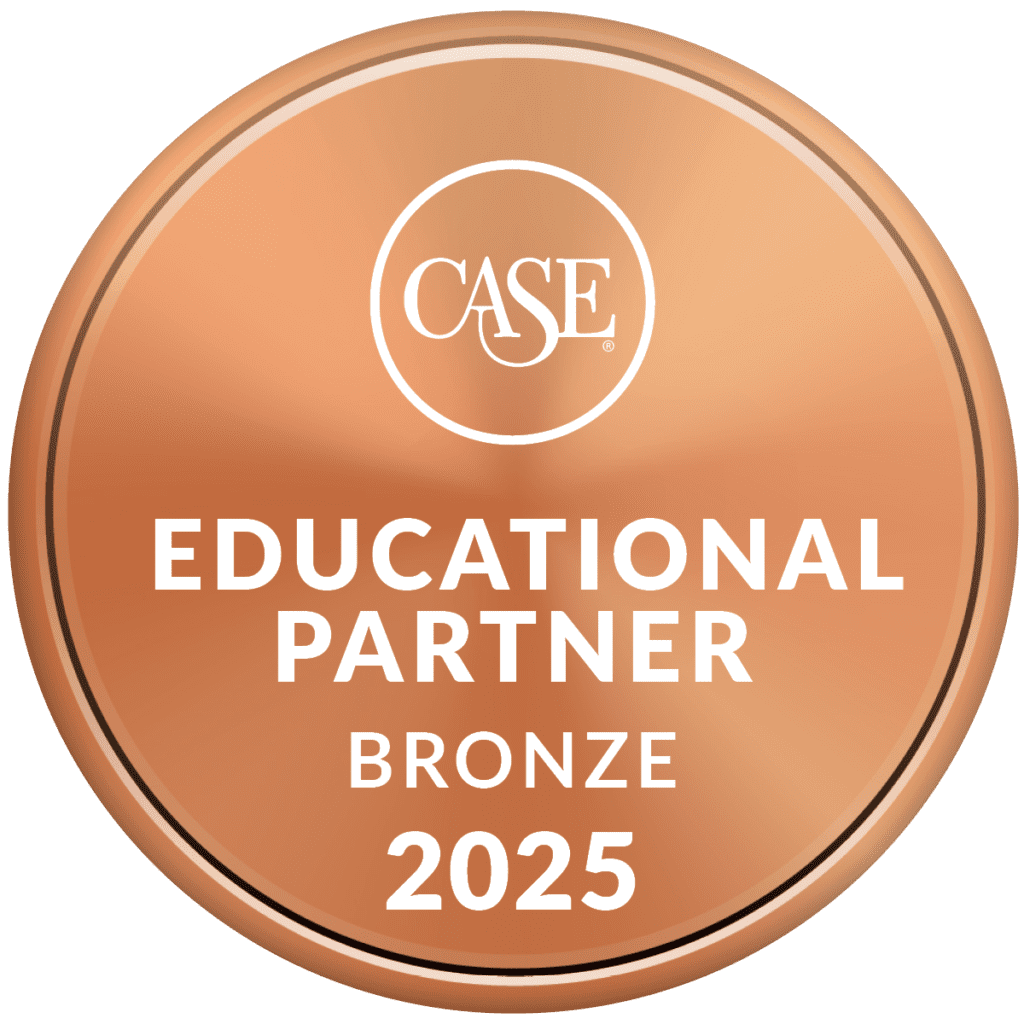September 23, 2025  Don’t Make It a Transaction Don’t Make It a Transaction
by Arthur C. Criscillis, Ed.D.
Managing Partner
Many organizations have donor recognition societies for various types of giving—leadership annual giving, planned giving, cumulative giving, and consistency in giving. These societies are set up to recognize giving behavior that is important and to encourage people to make those gifts. While the value and importance of such societies in prompting individuals to make gifts is open to debate, my intention here is not to join that debate, but rather to address what I consider to be a mistake in many of the giving societies that have been set-up: Benefits. In too many instances, these giving societies have specifically articulated benefits for members. So, for example, members may receive quarterly communications, invitations to an event or events, and decals/bookmarks, to name but a few. The key point here is not what is offered, but rather that specific benefits of any type are offered.When benefits are specifically articulated, it reveals a lack of confidence in the power of philanthropy to have an impact. In short, a lack of belief in the actual case for making a gift. Most donors give to have an impact on something they care about. When benefits are specified up front, the act of giving is subtly transformed into a transaction: giving to get, versus giving to have an impact.When benefits are specified, expectations are unnecessarily created. When that specific gift (leadership annual, planned, major) was made, the existing expectation was primarily that the gift would have an impact—no more, no less. By articulating specific benefits, the donor will now have the expectation that “X”, “Y”, and/or “Z” will occur. As a result, all you can now do is fulfill an expectation. If you fail to do it, then you will have (needlessly) disappointed the donor. If those benefits are not articulated but are still part of what you want to do with and for donors of a giving society, you can surprise and delight them.Most of the benefits tend to be “things” either given to the donor or “experiences” offered to the donor. That is fine, but the overarching and overall objective should be to help the donor feel appreciated and to understand even better the impact of that donor’s gift. Rather than an easily defined checklist serving as benefits, we would be better served by thinking about what sort of communications and engagement activities are appropriate.Giving societies have their place, I believe. But in thinking about what membership entails, we should focus more on what we want them to experience, how we want them to feel, and how membership can tie them more closely to us by highlighting how they are furthering our mission.An outlier in this regard can be things like athletics and the arts, which offer ticketing benefits. That is a different kettle of fish because the people involved in that are indeed engaging in a transaction. It’s all about getting the tickets and the associated experiences—it’s not primarily philanthropic. I can choose the seating arrangement I prefer. I can have early access to tickets. I can get favorable parking. In many instances, organizations view this as a model or template for structuring giving societies, but the nature of the gift is often different, i.e., it is transactional.
|
Foundation Endowments Were Up Double-Digits For 2024 If David King is one thing, he is consistent.  “I may be a broken record on this, but I do think it is time to reevaluate the 5% spending requirement and determine if it is still the right number. It’s been static for years, but it seems that double-digit investment returns are the expectation of the market, not an anomaly.” |
The average annual returns on foundation endowments in 2024 reached double-digit positive growth from the previous year for the 255 foundations surveyed in the new annual Council on Foundations and Commonfund Study of Investment of Endowments for Private and Community Foundations.The average 2024 calendar year return on these endowed funds for the 154 private foundations participating in the study was 10.3%, down from 12.6% reported for the 2023 study. Similarly, for the 101 participating community foundations, the average 2024 return was 11%, from 14.1% in 2023.By comparison, the S&P 500 ended 2024 up more than 23%. It was fueled by both the Nasdaq (up nearly 29%) and the Nasdaq 100 (up nearly 25%). The so-called “Magnificent 7” group of tech stocks was up nearly 67%.It is the second consecutive year that both foundation segments reported double-digit returns, stabilizing from the dramatic year-over-year swings reported in the prior two studies, including double-digit declines in 2022 (all return data reported net of fees). |
|
Cultivate Major Gifts NOW…Or Maybe Sooner Jaci Thiede doesn’t want you to be behind. “Yes, it’s always a good time to think about cultivating your top donors. But if you’re just starting to consider how to cultivate your top donors, you’re likely already behind. You should have a cultivation plan tailored to each donor, not just based on the year-end calendar. By building and nurturing your relationship with the donor, you’ll probably learn when the best time of year is for them to make their gift(s), which may or may not be 12/31.” |
Whether you are just starting a major-donor program after cuts in government funding or it’s been seeking major gifts for a long time, you should take steps now to build strong relationships with donors that will yield results during the critical year-end push.Check ListIdentify prospects and assess their ability to give.The key to a well-functioning major-gifts program is to understand who your prospects are and where they are on their giving journey with your nonprofit. If you’re just beginning a major-gifts program, you’ll need to do a deep dive into your donor database to understand who the best prospects are.Meet with donors.Once you identify who the major-gift prospects are and when your organization last contacted them, it’s helpful to schedule meetings with any prospects you haven’t personally connected with. That way, you can learn what motivates them.Craft a cultivation plan.Once you know how many touches a donor has had and what their interests are, you can develop a plan to nurture them over the year. There is no simple rule about how many interactions are needed to secure a major gift, fundraisers say, but it won’t be just one lunch followed by a large donation. It’s all about relationship building and building and strengthening that relationship, making them feel, not like ATM machines, but investors.Make adjustments and update goals.Many donors are also affected by the stock market, and they may express concerns about making a gift if the markets are down. Or a donor’s personal life may take a turn that makes them inaccessible to the organization for a time, and you may need to adjust your strategy or the organization’s overall major-gifts goal.Share impact — and ask when ready.Because major donors usually have already made gifts to your organization, it’s important to share the impact of previous gifts with them. |
|
|
|
Make Sure You Get AI Right! David King cautions on the use of AI. “People need to be very careful with how much control they turn over to AI. We used it recently on something and found that the output was using the British spelling of certain words that differ from the US spelling. This was a US-based AI being accessed from inside the continental US, yet it was using the language of a different country. If AI did that in your donor communications and you are not paying close attention, you run the risk of exposing your use of impersonal AI in the relationship process or, perhaps worse, looking illiterate to the donor.”
|
According to the 2025 Virtuous Fundraising Benchmark Report, online giving grew by 4.3% from the previous year, yet donor retention remains a critical challenge. The report also revealed that lifetime giving is increasing when fundraisers employ deeper, more relevant engagement strategies with donors. Artificial intelligence offers transformational potential, but only if applied responsibly and used beneficially. Leveraging AI is not just important for efficiency but for preserving trust and advancing mission integrity. Across every sector, AI is reshaping how organizations work. However, in the nonprofit space, the stakes are uniquely high. Fundraisers aren’t just driving transactions or selling products; they’re stewarding relationships, building community, nurturing generosity, and advancing missions that matter. This makes the ethical use of AI not a technical consideration but a moral imperative.To navigate this new territory, you must develop an appropriate-use policy to govern how you deploy the technology ethically and strategically. More here. |
|
|
|






